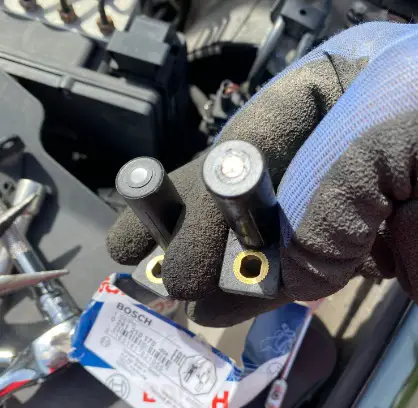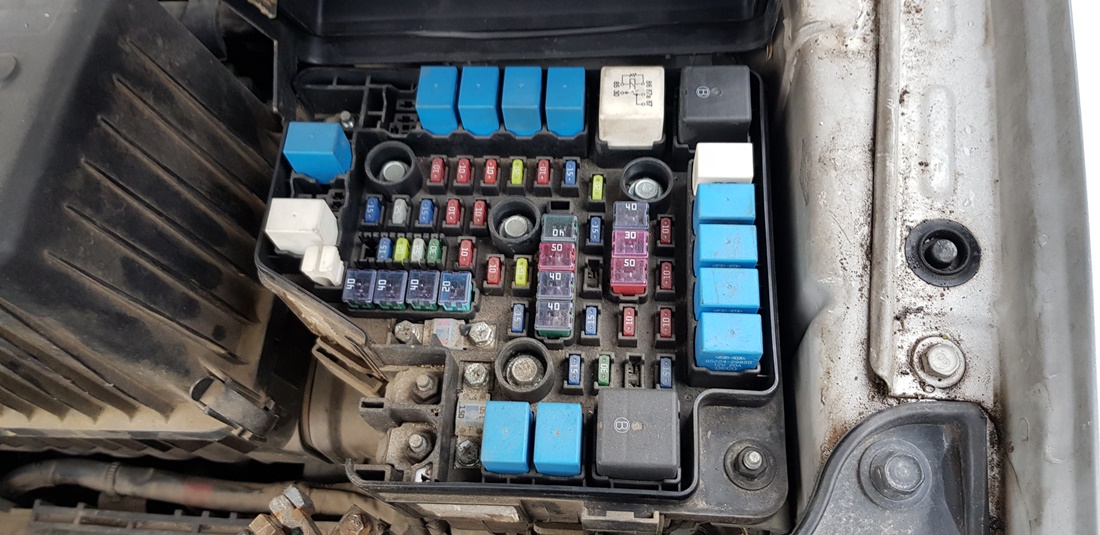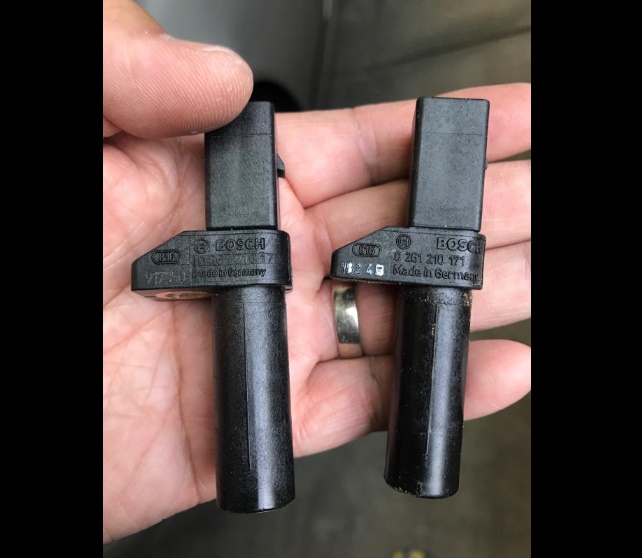I have always been fascinated by how car fuel tanks work. After all, without fuel, the cars can’t run. Many friends asked me about fuel tanks and whether are they pressurized or not.
Eager to find out, I did research online and talked to a couple of mechanics. This is what I found out about fuel tanks and whether they are pressurized or not.
- Key Takeaway
- Are Car Fuel Tanks Pressurized?
- Is It Normal To Have Pressure On The Gas Tank?
- Why is There Pressure When I Take My Gas Cap Off?
- How Do I Get The Pressure Out of My Gas Tank?
- Can High Fuel Pressure Damage Injectors?
- Can High Fuel Pressure Cause Misfires?
- What Causes Pressure To Build Up in Your Gas Tank?
- What PSI Should My Fuel Pressure Be?
- Can You Drive With a Bad Fuel Tank Pressure Sensor?
- What Causes Low Fuel Pressure?
- FAQs
- Q: What is a pressurized car fuel tank?
- Q: How does a pressurized car fuel tank work?
- Q: What is the purpose of a fuel pump in a pressurized car fuel tank?
- Q: What happens if the fuel tank is not pressurized?
- Q: How is a pressurized car fuel tank vented?
- Q: Can the pressure in a pressurized car fuel tank be adjusted?
- Q: What is the purpose of a fuel filter in a pressurized car fuel tank?
- Q: What should I do if the fuel tank is full but the tank pressure is low?
- Q: What type of fuel should I use with a pressurized car fuel tank?
- Q: How does a pressurized car fuel tank affect fuel economy?
- In Conclusion
Key Takeaway
- Car fuel tanks are pressurized to help control emissions by preventing gasoline vapors from being released into the atmosphere.
- It is normal to have pressure on the gas tank as it helps control and capture gasoline vapors, preventing them from being released into the atmosphere.
- To release the pressure from your gas tank, you can carefully push the valve inside the fitting using a rag and a screwdriver, ensuring the rag is there to catch any fuel that may be released due to the pressurization.
Are Car Fuel Tanks Pressurized?

Yes, car fuel tanks are pressurized to control and capture gasoline vapors, rather than releasing them into the atmosphere.
This system helps reduce the amount of fuel vapors that can escape, contributing to environmental protection.
However, not all vehicles have pressurized fuel tanks, for example, Formula 1 cars do not pressurize their fuel tanks.
High pressure in a car’s gas tank can sometimes lead to dangerous conditions, so it’s essential that these systems function correctly.
Is It Normal To Have Pressure On The Gas Tank?
It is normal to have some pressure in your gas tank, as it will build naturally. Gasoline is made from over 500 different hydrocarbons, which get vaporized when running. Vaporized fuel then creates pressure in the tank.
Although this is entirely normal, the EVAP system in cars is there to filter the fuel vapors and prevent the gas tank from becoming overly pressurized, resulting in many hazardous situations, including fire.
The amount of pressure in the gas tank will be dependent on the temperature of the gasoline is. The higher the temperature, the more pressure there will be.
Why is There Pressure When I Take My Gas Cap Off?

If there is pressure (a hissing sound) when you open your gas cap, it means that the vapors from the gas tank may not be routed back to the engine, and you should have it looked at before it becomes a bigger problem.
Some overpressure found in the tank is okay under certain conditions. Gasoline has a high vapor pressure and vaporizes easily building pressure.
Overpressure can happen if your EVAP system is not working correctly. It may fail, become clogged, or even become restricted.
You may find that this happens every once in a while, which may not be an issue. But if you find that it happens every time you open the cap, you will want to have it looked at to make sure that your EVAP system is in working condition before it does more costly damage to your car.
Some cars have a pressure vacuum fuel cap, a vented cap used to vent certain air into the car gasoline track line. With this, pressure is formed outside of the tank with a vacuum, formed from the displacement of fuel inside. The pressure valve will close when the pressure inside the line is equalized.
On the other side of that, if you happen to hear a hiss from your gas tank when opening the cap, it means that everything is working the way it should be. This usually happens when you have at least half of a gas tank, showing that the system works correctly and is not releasing harmful fumes.
How Do I Get The Pressure Out of My Gas Tank?
Most of the time, you can relieve this pressure by simply unscrewing the cap when filling your tank. If you drive a lot and pressure has built throughout the day, this is the easiest and simplest fix. The system will be depressurized by simply taking off the gas cap, therefore neutralizing the pressure.
To release pressure from your gas tank, you will use a fuel pressure regulator. To do this, you will want to first disconnect the negative battery cable. Then, you’ll have to locate the fuel pressure regulator.
Once you have done this, you will have to take the vacuum hose off of the top of the fuel pressure regulator. Then, connect a hand-operated vacuum pump at the top of the pressure regulator.
A fuel tank’s pressure should be between 40 to 100 degrees, the fuel filling around half a tank.
Many cars used vented gas caps through the 1960s. Gas caps with a hole in it, caps allow fuel to splash out when accelerating and stop being used says Car and Driver.
Can High Fuel Pressure Damage Injectors?

High fuel pressure generally does not damage injectors, but if the pressure remains high for an extended period, it can lead to problems such as fouled plugs, excessive carbon buildup, and potential leaks in direct injectors.
A common way injectors get damaged is when debris finds its way into the system. This will plug the armature, and the nozzle or cause the nozzle needle to become stuck.
If there is debris in your gas tank and the fuel pressure is high, pushing the fuel through the nozzles with even more pressure will cause damage to the injectors, but pure gasoline shouldn’t hurt them unless it’s under extreme circumstances.
To prevent debris from entering your gas tank, you should make sure to avoid filling your tank while a gas station is receiving a new shipment of fuel, which is a very common way they get in there. Impurities need time to settle in the gas station’s tanks. Otherwise, they could, unfortunately, end up in your car!
Suppose you are someone who has higher fuel pressure, whether by accident or by choice; it’s best to use high-quality fuel. You should make sure to get this from gas stations that are known for having great fuel. This may not be the most budget-friendly. But, it will ensure that your injectors will not get damaged by debris being pushed through.
Additionally, you can also keep your whole fuel system clean. This can be done by changing your fuel filters regularly and not installing aftermarket components.
High fuel pressure in itself cannot do much damage to injectors. However, it’s important to keep your fuel free of debris to prevent it from doing severe damage under high pressure.
Can High Fuel Pressure Cause Misfires?
Engine misfires are a very common sign that your car has a bad fuel pressure regulator and this will happen if you have high fuel pressure. It occurs when the fuel-to-air ratio inside the engine is off. Having a high fuel pressure typically means there is too much fuel and not enough air in your tank.
This is called running rich. On the flip side, misfiring can also be caused by your car running lean, which means there is too much air in your tank and not enough fuel.
Either way, these issues would be caught with a fuel pressure regulator, which decides how much fuel there is in the tank and how much pressure it has going through the injectors.
Along with the misfires, your car can also experience a reduction in power and acceleration and become less fuel-efficient.
It’s essential to get your pressure regulator checked out if you don’t intend for your car to have high fuel pressure. If you are experiencing any of the above, you’ll want to get your vehicle serviced. Otherwise, if not done right, your car can also experience black smoke from your exhaust, fuel dripping from the tailpipe, or your engine may not start at all.
Some people intentionally make their engine run rich, but if done the wrong way or too much, it can cause many easily preventable issues. The best way to prevent damage to your car is to notice problems and get the fuel pressure regulator checked out before it gets worse.
What Causes Pressure To Build Up in Your Gas Tank?
Your gas tank will experience a pressure buildup as vapor pressure increases from heat. Liquid gasoline will release gasses in the tank, the amount of which is changed by the temperature of the gas. This is usually stabilized with the evaporative emission control system, known as the EVAP.
Several different reasons can cause high pressure to build up in your gas tank. One reason could be that a certain aspect of the EVAP system could have failed. It could have become restricted or clogged.
The EVAP system contains a charcoal canister to absorb excess gas from the fuel system. Over time you may find that the charcoal canister becomes clogged with excess buildup, which will prevent gas fumes from either entering or exiting the canister. This will cause a pressure buildup within the tank.
Another cause for pressure buildup caused by the EVAP system is when the purge valve is stuck open. It would create a vacuum leak that would affect your engine since a large quantity of air will enter your engine. This will result in your car’s air-to-fuel ratio changing.
A common reason that the pressure could build up is that the fuel vapor line becomes kinked or there is a failure in the purge control or vent solenoid. All of these things mentioned will fail to allow the vapor pressure in the tank to move through the EVAP system, raising the pressure in the gas tank.
What PSI Should My Fuel Pressure Be?
A carbureted engine will usually need around 4 to 7 psi. (28 kPa), while modern multipoint fuel-injected, high-performance engines may run at about 60 psi (414 kPa).
Modified car’s psi will vary depending on whether they are port-injected, usually running at about 1900 psi, or direct-injected, which can run upwards of around 2000 psi.
If you want more horsepower for your car, you’ll need to increase the amount of air and fuel being delivered to the engine.
It’s important to find out what the max pressure your engine requires Is since the fuel pressure significantly affects the amount of flow a pump can produce.
Fuel flow will decrease as the pressure increases. Many people are modifying their cars these days. It’s so important to know this in order to prevent damage to your vehicle.
Turn the key on without starting the engine to perform the test.
You should see the gauge jump between 45 to 58 psi for direct port injection systems (DPI). If you have a throttle body injection system (TBI), you will see the gauge jump between 13 to 17 psi.
The fuel pressure should drop about five psi when your engine is turned on.
If you want specifications, you can find them online! While many cars have a system PSI of around 40-60, some have a much lower PSI. It’s important to know what psi is best for your system specifications before going off of average numbers.
Can You Drive With a Bad Fuel Tank Pressure Sensor?
You can drive with a bad pressure sensor as long as the fuel pressure in your tank is within the normal limit. If the pressure does happen to be off, it could create longer-lasting issues that will be more costly to you.
The only purpose the pressure sensor has is to test the leaks in the fuel system. It does not have any other effect on the engine performance.
An insufficient fuel tank pressure sensor will not damage your car or cause any safety issues.
There may be some warning lights on in your vehicle, like a check engine light. But, if the only problem you are having is that your fuel tank pressure sensor is not working right, damaged, or not working at all, your car should work normally, and cause no risk or harm to you at all.
That being said, it is an essential part of your car, and it should be fixed when you can. If your sensor is not working and you start experiencing problems with your vehicle mentioned above, such as misfiring, leaking from your exhaust, etc., it means that the pressure is off, and you will need to take it in before there are severe issues with your car.
To sum it up, it is safe to drive with a bad fuel tank pressure sensor, but it can quickly become unsafe if there is a pressure issue that you aren’t aware of.
What Causes Low Fuel Pressure?
Low fuel pressure can result in a couple of different things. You may have an unresponsive throttle since your car cannot properly deliver fuel to the cylinders. You may also experience difficulty starting your car, your engine stalling, misfires, low performance, and a check engine light turning on.
A couple of different things can cause low fuel pressure.
1. Dirty fuel filter
A clogged or dirty fuel filter can cause a low fuel pressure, resulting in a lean fuel condition. This will cause the engine to misfire, resulting in poor fuel mileage and the check engine light. This is because the fuel filter is used to clean the fuel that enters the engine.
2. Bad fuel pressure regulator
The fuel pressure regulator controls the fuel pressure in the fuel rail. If this is not working properly, it can create a fuel pressure that is either too high or too low.
3. A stuck fuel injector
if one of the fuel injectors happens to get damaged or becomes stuck open, it can cause low pressure in the rail. This can be seen when a mechanic diagnoses the problem, as there will be misfire codes on one specific cylinder.
4. Bad fuel pump
When the fuel pump becomes slower or gets damaged inside, it will cause it not to push enough fuel through to the engine, which will cause low fuel pressure.
FAQs
Q: What is a pressurized car fuel tank?
A: A pressurized car fuel tank is a container that holds fuel for a vehicle’s engine and is designed to maintain constant pressure inside the tank.
Q: How does a pressurized car fuel tank work?
A: A pressurized car fuel tank works by using a fuel pump to pressurize the tank, which helps to improve fuel flow to the engine and maintain consistent fuel pressure.
Q: What is the purpose of a fuel pump in a pressurized car fuel tank?
A: The fuel pump in a pressurized car fuel tank is responsible for pumping fuel from the tank to the engine, while also maintaining the proper pressure needed for fuel delivery.
Q: What happens if the fuel tank is not pressurized?
A: If the fuel tank is not pressurized, it can lead to inconsistent fuel flow and pressure, which can result in engine performance issues, such as fuel starvation or rough idling.
Q: How is a pressurized car fuel tank vented?
A: A pressurized car fuel tank is vented through a valve or vent system, which allows air and fuel vapors to escape while keeping the tank pressurized.
Q: Can the pressure in a pressurized car fuel tank be adjusted?
A: The pressure in a pressurized car fuel tank is typically set by the design of the fuel system and cannot be easily adjusted by the vehicle owner.
Q: What is the purpose of a fuel filter in a pressurized car fuel tank?
A: The fuel filter in a pressurized car fuel tank is used to remove impurities and debris from the fuel before it reaches the engine, helping to protect the fuel injectors and maintain proper engine performance.
Q: What should I do if the fuel tank is full but the tank pressure is low?
A: If the fuel tank is full but the tank pressure is low, it could indicate a problem with the fuel pump or vent system. It is recommended to have the vehicle inspected by a qualified mechanic to diagnose and repair any issues.
Q: What type of fuel should I use with a pressurized car fuel tank?
A: The type of fuel recommended for use with a pressurized car fuel tank will vary depending on the vehicle’s make and model. It is best to refer to the owner’s manual or consult with a knowledgeable professional for the proper fuel type.
Q: How does a pressurized car fuel tank affect fuel economy?
A: A properly functioning pressurized car fuel tank can help improve fuel economy by ensuring consistent fuel flow and pressure, which allows for optimal engine performance and efficiency.
In Conclusion
When it comes to pressurized car fuel tanks, there are some important things you need to be aware of.
First, you should always use a certified professional for any tank-related needs and never try to do anything yourself without the proper training and expertise.




